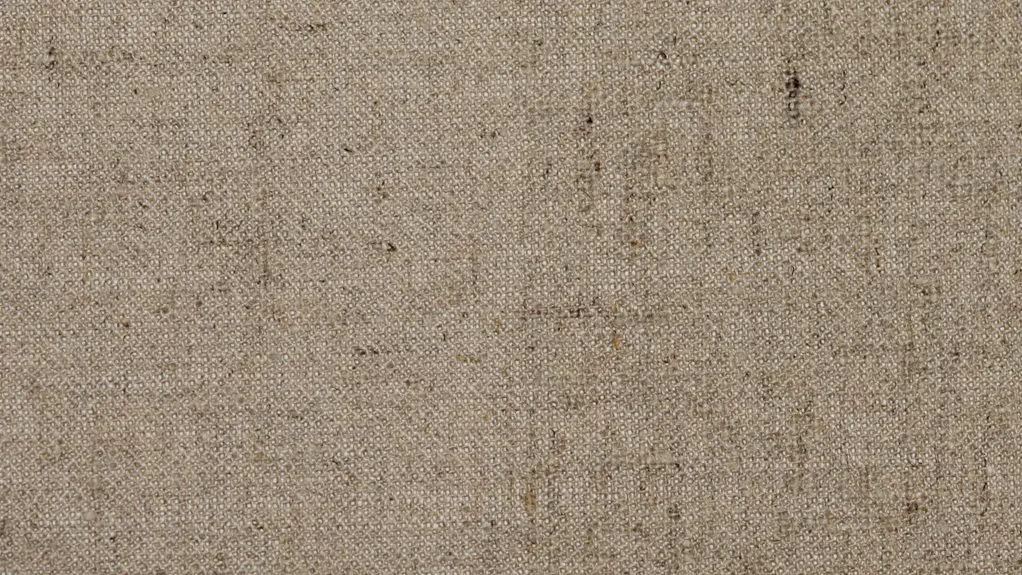You won’t break down a Kevlar vest with common fabric sprays because they’re designed to protect, not damage, the fibers. Kevlar’s strong, tightly woven molecular structure resists impacts and chemical exposure from everyday sprays. While harsh chemicals in large amounts can weaken Kevlar over time, typical sprays don’t pose a real threat to its durability or protective qualities. If you want to understand how these sprays interact with Kevlar and how to care for your vest, keep exploring.
Table of Contents
Key Takeaways
- Typical fabric sprays do not break down Kevlar fibers or compromise vest protection under normal use conditions.
- Prolonged exposure to harsh chemicals or strong solvents in sprays can weaken Kevlar fibers over time.
- Casual contact with fabric sprays is unlikely to degrade the strength or flexibility of Kevlar vests.
- Laboratory tests show Kevlar maintains durability against common sprays unless exposed to aggressive chemicals repeatedly.
- Best practice is to avoid using unknown or harsh chemical sprays and follow manufacturer care guidelines for vest longevity.
Understanding Kevlar: Composition and Strength
Kevlar’s unique molecular structure gives it incredible strength and durability. When you look closely, you’ll see it’s made from long chains of molecules called aramids, tightly woven together.
This arrangement lets Kevlar absorb and disperse energy effectively, making it resistant to impacts and cuts. You’ll find that the fibers are aligned in parallel, which adds to its tensile strength—meaning it can withstand a lot of force without breaking.
Because of these properties, Kevlar is much stronger than steel on a weight-for-weight basis. This is why it’s widely used in protective gear.
Understanding this composition helps you see why breaking down Kevlar fibers isn’t easy—its molecular bonds are specifically designed to resist damage and maintain integrity under stress.
How Kevlar Vests Provide Protection
You rely on Kevlar vests because their fibers are incredibly strong, helping absorb and disperse energy.
This strength lets the vest resist impacts and prevent penetration from bullets or sharp objects.
Understanding how these properties work together shows why Kevlar is so effective at protecting you.
Kevlar Fiber Strength
Although it might seem like just another fabric, Kevlar fibers boast incredible strength that makes them ideal for protective vests.
When you wear a Kevlar vest, you benefit from fibers that are five times stronger than steel on an equal weight basis. This strength comes from Kevlar’s molecular structure—long chains of tightly bonded molecules create a rigid, yet flexible material.
You don’t have to worry about the fibers tearing easily; their tensile strength resists stretching and breaking under stress. Because these fibers are lightweight, you get superior protection without the bulk.
Kevlar’s strength also means it can absorb and distribute force efficiently, forming the foundation for the vest’s protective properties. Understanding this strength helps you see why breaking down Kevlar with fabric sprays is so challenging.
Impact and Penetration Resistance
The incredible strength of Kevlar fibers plays a key role in how vests protect you from impacts and penetration.
When a bullet or sharp object strikes the vest, the tightly woven Kevlar fibers absorb and disperse that energy across a wider area, reducing the force that reaches your body.
You’ll notice that the fibers don’t just block the projectile; they work together to slow it down and prevent penetration.
This layered structure creates a barrier tough enough to stop bullets and blades, yet flexible enough to allow movement.
Common Threats to Kevlar Integrity
Since Kevlar vests rely on tightly woven fibers for protection, exposure to certain chemicals, UV light, and physical abrasion can weaken their integrity over time.
Kevlar vests depend on tightly woven fibers, vulnerable to damage from chemicals, UV light, and abrasion over time.
You should avoid contact with strong acids, bases, and solvents, as these can degrade the fibers and reduce their strength.
Prolonged sunlight exposure causes UV radiation to break down the polymer chains, making the vest brittle and less effective.
Physical wear, like friction or repeated bending, can also damage the fibers, leading to micro-tears that compromise protection.
Additionally, heat and moisture can affect the vest’s performance if it’s not properly maintained.
What Are Fabric Sprays and Their Intended Use
You’ll find fabric sprays are specially designed liquids that protect and enhance materials like Kevlar.
These sprays come in various types, each with specific application methods and effects on the fabric.
Understanding how to use them properly can help maintain your vest’s strength and durability.
Definition and Purpose
Fabric sprays enhance Kevlar vests by adding protective and functional layers without compromising flexibility.
When you apply these sprays, you’re fundamentally boosting the vest’s resistance to water, stains, and sometimes even UV rays or microbes. They’re designed to maintain the vest’s lightweight nature while improving durability and comfort.
You might think of fabric sprays as a quick, easy way to extend the life of your protective gear. Their purpose isn’t to break down or weaken Kevlar fibers but to support the vest’s performance in various conditions.
Common Fabric Spray Types
Several types of sprays cater specifically to enhancing Kevlar vests, each designed with distinct protective functions in mind.
You’ll find water-repellent sprays that help keep the vest dry, maintaining its flexibility and comfort.
Anti-microbial sprays prevent odor and bacterial buildup, extending the vest’s usability during long wear.
Some sprays add UV protection, shielding the fibers from sun damage that could weaken the material over time.
There are also fire-retardant sprays that boost resistance to heat and flames, providing extra safety in hazardous environments.
While some claim to break down Kevlar fibers, most fabric sprays focus on preserving or enhancing the vest’s performance.
Understanding these types helps you choose the right spray without risking damage to your protective gear.
Application Methods and Effects
Applying sprays to Kevlar vests requires careful attention to guarantee the protective qualities remain intact.
Fabric sprays, designed for water repellency or stain resistance, are typically applied through even, light misting from a short distance. You should avoid heavy saturation, which can interfere with the vest’s fiber structure and reduce effectiveness.
Most sprays dry quickly and won’t alter Kevlar’s strength if used properly. However, some chemical sprays contain solvents that might degrade the fibers over time.
Always test a small area first and follow manufacturer guidelines. Remember, these sprays are intended to enhance surface properties, not weaken or break down Kevlar.
Misapplication or using inappropriate sprays can compromise protection, so understanding the product and correct method is essential for maintaining vest integrity.
Chemical Properties of Fabric Sprays
When you choose a spray for Kevlar vests, understanding its chemical makeup is essential because it affects both performance and safety.
Fabric sprays typically contain solvents, binders, and additives designed to alter surface properties like water resistance or texture. Some sprays include harsh chemicals such as strong acids or bases, which can degrade synthetic fibers.
Others rely on milder compounds that coat rather than chemically break down fibers. Reactive ingredients might interact with Kevlar’s aramid polymer, potentially weakening its structure if used improperly.
However, many commercial fabric sprays are formulated to be safe for synthetic textiles, focusing on enhancing appearance or durability without compromising strength.
You should carefully check ingredient lists and avoid sprays with corrosive chemicals if your goal is to preserve Kevlar’s protective qualities.
Scientific Evidence on Fabric Sprays Affecting Kevlar
Understanding the chemical makeup of fabric sprays sets the stage for examining how they actually impact Kevlar fibers.
Scientific evidence shows that most common fabric sprays don’t chemically break down Kevlar’s strong aramid structure. However, some solvents or harsh chemicals found in certain sprays might weaken the fiber bonds over long exposure.
You should consider:
- Kevlar’s inherent resistance to many chemicals
- The lack of widespread studies proving sprays degrade Kevlar quickly
- How environmental factors combined with sprays might affect strength
While casual contact with fabric sprays is unlikely to harm your vest, repeated or prolonged exposure to aggressive chemicals could reduce its protective qualities.
Staying informed about what’s in your sprays helps you protect your Kevlar gear effectively.
Laboratory Tests on Kevlar Exposure to Fabric Sprays
Although Kevlar is known for its chemical resilience, laboratory tests have been essential in revealing how specific fabric sprays interact with its fibers under controlled conditions.
When you expose Kevlar samples to various fabric sprays, tests measure changes in tensile strength, fiber integrity, and protective performance. Results consistently show that most common fabric sprays don’t compromise Kevlar’s durability or ballistic resistance.
However, some sprays containing strong solvents or acidic compounds can weaken fibers slightly when applied repeatedly or in high concentrations. Still, these effects are minimal and require prolonged exposure, unlikely in typical use.
Real-World Reports and Incidents
Since fabric sprays are commonly used in everyday life, real-world reports and incidents provide valuable insight into how these products actually affect Kevlar vests outside the lab.
You’ll find that documented cases of fabric sprays causing significant damage to Kevlar vests are extremely rare. Users and law enforcement rarely report degradation or performance issues linked directly to these sprays.
Instead, most incidents involve:
Accidents usually stem from harsh chemical spills or normal wear, not typical fabric spray exposure.
- Accidental spills of harsh chemicals rather than typical fabric sprays
- Vests showing wear and tear from regular use, not spray exposure
- No confirmed cases of sprays compromising vest integrity during real threats
This suggests that everyday fabric sprays don’t pose a serious risk to Kevlar’s protective abilities in practical scenarios.
You can feel more confident in how these vests perform despite exposure to common fabric care products.
Expert Opinions From Material Scientists and Law Enforcement
When you consult material scientists and law enforcement professionals, you’ll find a consensus that typical fabric sprays pose minimal threat to Kevlar vests. These experts emphasize that Kevlar fibers resist chemical degradation from common sprays used in fabrics. Law enforcement relies on this durability daily, reinforcing trust in Kevlar’s protective qualities.
| Expert Type | Concern Level | Key Insight |
|---|---|---|
| Material Scientist | Low | Kevlar resists most chemical exposure |
| Law Enforcement | Minimal | Vests retain integrity after spray use |
| Chemical Analyst | Moderate (Rare cases) | Only harsh chemicals affect Kevlar |
| Safety Officer | Low | Routine sprays don’t compromise safety |
Best Practices to Maintain and Protect Kevlar Vests
To keep your Kevlar vest effective, you need to follow specific maintenance steps that preserve its strength and durability. Proper care guarantees your vest remains reliable when you need it most.
Avoid exposing it to harsh chemicals or extreme heat, as these can weaken the fibers. Regularly inspect your vest for any signs of wear or damage, and clean it according to the manufacturer’s instructions.
Here are key practices to maintain and protect your Kevlar vest:
- Store it in a cool, dry place away from direct sunlight.
- Use mild soap and cold water for cleaning; never machine wash or dry.
- Avoid folding or compressing the vest for long periods to prevent fiber damage.
Frequently Asked Questions
Can Kevlar Vests Be Recycled or Repurposed After Use?
You can recycle or repurpose Kevlar vests, but it’s tricky. They’re tough and designed for protection, so recycling requires special processes. Some companies repurpose the material into new products, giving your vest a second life.
How Long Does a Kevlar Vest Typically Last in Active Service?
Think of your Kevlar vest as a tire—it wears down with use. Typically, it lasts 5 years in active service, but exposure to sweat, sunlight, and damage can shorten its protective lifespan. Stay vigilant!
Are There Alternative Materials to Kevlar for Personal Body Armor?
You can choose alternatives like Dyneema, Spectra, or Twaron for body armor. These materials offer lightweight, flexible protection. They’re often used in tactical gear, providing options beyond traditional Kevlar vests for personal safety.
What Maintenance Is Required for Fabric Sprays Unrelated to Kevlar?
Oh, you just spray and forget, right? Actually, you’ll want to regularly clean the fabric, reapply sprays as directed, and store items properly to keep them effective—because magic unfortunately doesn’t maintain itself.
How Do Environmental Conditions Affect Kevlar Vest Performance Over Time?
You’ll find that heat, moisture, and UV exposure gradually weaken Kevlar fibers. Over time, these conditions reduce your vest’s strength and flexibility, so you should store and maintain it properly to keep it effective.
- What Is the Best Fabric for Pillow Cases? a Complete Guide - June 25, 2025
- How to Make a Simple Fabric Pouch for Your Phone and Cards - June 25, 2025
- Sew Your Own Gear: A Guide to Making a Fabric Guitar Case - June 25, 2025







